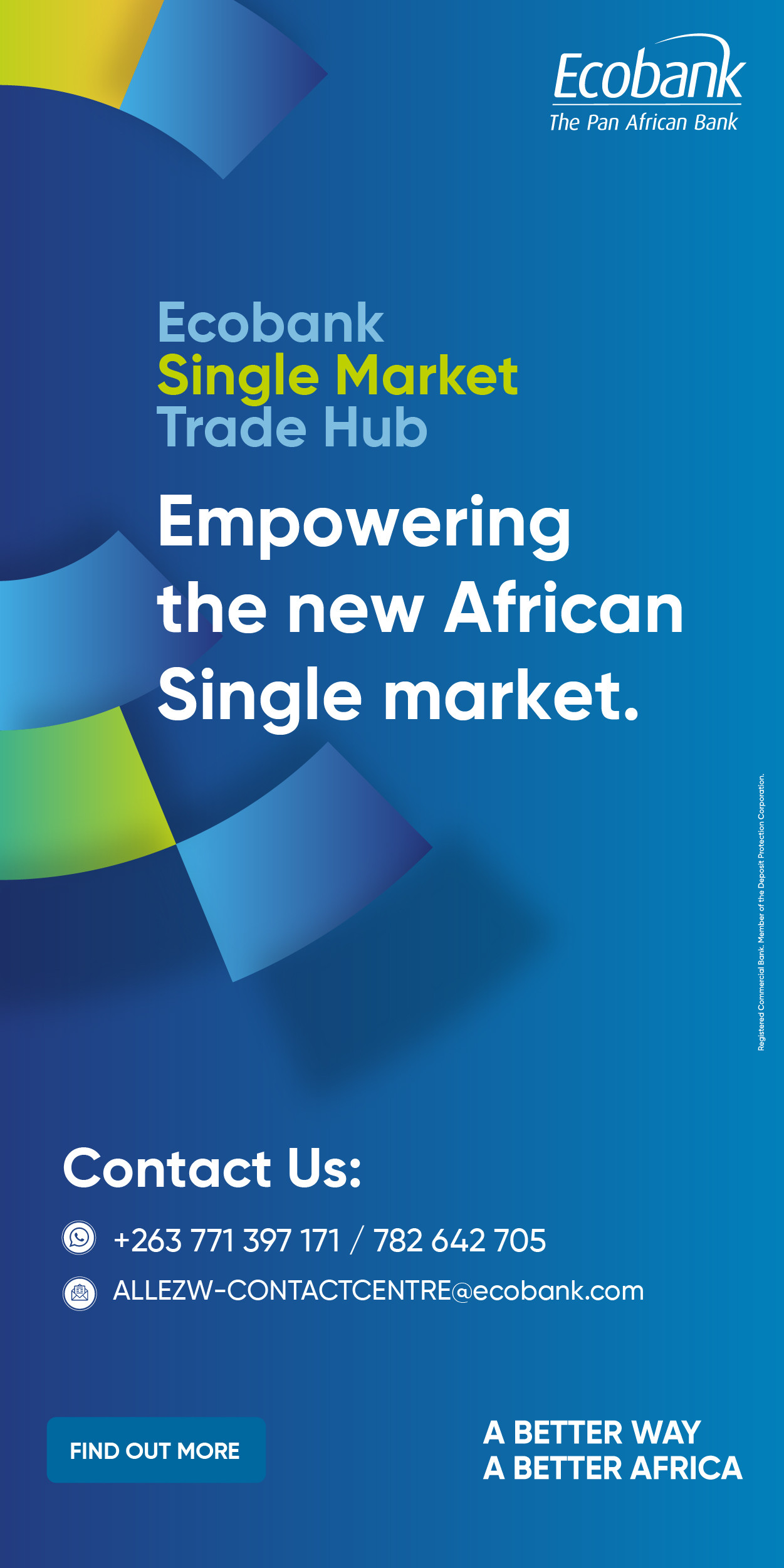- The US has imposed an 18% tariff on Zimbabwean goods, effective April 3, 2025, as part of President Trump's reciprocal tariff policy
- Zimbabwe's exports to the US, primarily sugar, tobacco, and ferroalloys, will face increased costs, potentially reducing their competitiveness in the American market
- US-Zim trade is minimal, with Zimbabwe exporting $48.15 million to the US in 2024, while importing $65.5 million, resulting in a trade deficit of over $200 million
Zim-USA trade in US$ Millions
Source: Zimstat, Equity Axis
Harare- The United States has imposed new tariffs on Zimbabwe as part of President Donald Trump’s rollout of a trade war strategy, introducing “reciprocal tariffs” that subject Zimbabwean goods to a minimum tariff of 18%.
This policy, announced on April 3, 2025, reflects Trump’s approach to counter perceived imbalances in global trade by imposing tariffs proportional to those levied on U.S. goods by other nations.
For Zimbabwe, this marks a significant shift, as tariffs on its exports to the U.S. previously varied by product. With trade between the two nations already minimal.
Zimbabwe exported US$48.15 million worth of goods according to Zimstat while USA trade data points to $67.8 million in 2024. However, whatever figure we are working with, new 18% tariff could further strain an already fragile Zimbabwean economy.
Key exports like sugar, tobacco, and ferroalloys, which form the bulk of Zimbabwe’s shipments to the U.S., will now face increased costs, potentially reducing their competitiveness in the American market.
Trump’s reciprocal tariff policy applies varying rates across African nations based on what the U.S. perceives as their tariffs on American goods. Zimbabwe’s 18% tariff aligns with the U.S. claim that Zimbabwe imposes a 35% tariff on U.S. goods.
US reciprocal tariffs in %
In contrast, other African countries face different rates: Botswana, a major diamond producer, is slated for a 37% tariff (reflecting a perceived 74% tariff on U.S. goods), South Africa faces 30% for charging USA 60%, Madagascar 47%, and Lesotho a steep 50%, the highest among African nations.
Meanwhile, countries like Benin, Rwanda, and Sierra Leone face a baseline 10% tariff, suggesting lower perceived trade barriers against the U.S.
South Africa, a larger U.S. trading partner with $14.7 billion in exports in 2024, benefits from the African Growth and Opportunity Act (AGOA), which grants duty-free access for many goods though Trump’s scepticism toward AGOA raises questions about its future.
Zimbabwe, ineligible for AGOA due to governance issues, lacks such advantages, making the 18% tariff a heavier relative burden given its smaller trade volume with the U.S.
Since 2021, U.S.-Zimbabwe trade has remained limited and imbalanced. Zimbabwe exported $102.23 million to the U.S. while importing $306.79 million, yielding a trade deficit of over $200 million.
By 2024, exports had dropped to $67.8 million (down 41% from 2023’s $114.9 million), while imports were $43.8 million, reflecting a shrinking trade relationship. This decline aligns with frozen U.S.-Zimbabwe diplomatic ties, strained since the early 2000s due to Zimbabwe’s political repression and economic mismanagement under Robert Mugabe and the Second Republic according to the United States.
The U.S. Zimbabwe Democracy and Economic Recovery Act (ZDERA) of 2001, amended in 2018, restricts multilateral financing until Zimbabwe enacts reforms, while targeted sanctions since 2003 hit individuals and entities linked to human rights abuses and corruption.
Relations remain stagnant, with little progress toward thawing, as evidenced by the U.S.’s continued exclusion of Zimbabwe from AGOA and limited Development Finance Corporation (DFC) activity since 2015.
China vs. U.S. Investments in Africa and Zimbabwe
China’s investment in Africa vastly outpaces the U.S., with trade reaching $295 billion in 2024 compared to U.S.-Africa trade of under $80 billion. In Zimbabwe, Chinese mining conglomerates have invested over $1 billion in lithium alone, alongside infrastructure like railways and dams, tying economic gains to Beijing’s Belt and Road Initiative. Across Africa,
China controls key mineral assets like 15 of 19 cobalt and copper mines in the DRC often paired with state-backed infrastructure loans, though criticised for debt dependency (e.g., Angola’s $17 billion debt).
The U.S., meanwhile, focuses on strategic minerals but invests less directly, relying on initiatives like the DFC, which has limited Zimbabwe projects since 2015, totalling just $6 million in loan guarantees for MSMEs. The U.S. aims to counter China’s influence, through talks with G7 allies to close infrastructure gaps but Trump’s tariffs signal a protectionist shift, unlikely to boost U.S. investment in Zimbabwe and Africa.
U.S. Investments in Zimbabwe: Limited but Targeted
U.S. investment in Zimbabwe is negligible by comparison, constrained by sanctions and ZDERA’s financial restrictions. Since 2015, the U.S. Development Finance Corporation (DFC) has committed only $6 million in loan guarantees, targeting micro, small, and medium enterprises (MSMEs) like a $5 million guarantee in 2022 for NMB Bank to lend to small farmers.
Historically, U.S. aid via USAID has been significant, $300 million annually in the early 2000s for health and food security but this tapered to $100 million by 2023, focusing on HIV/AIDS (PEPFAR) and drought relief, not direct investment.
Where the U.S. has delivered benefits, they’re indirect and small-scale. For example, PEPFAR funding since 2003 has supported 1.2 million Zimbabweans on antiretroviral therapy, stabilising the workforce, a boon for mining productivity.
Pre-sanctions, U.S. firms like Heinz and Coca-Cola had bottling plants in Harare, employing hundreds and integrating Zimbabwe into global supply chains, but these exited by 2005. The U.S. once imported $200 million in Zimbabwean tobacco annually (1990s), but tariffs and sanctions slashed this to $20 million by 2024.
The lack of U.S. investment reflects frozen relations, leaving Zimbabwe with little economic leverage or growth stimulus from Washington.
China’s investments outstrip the U.S. in scale, immediacy, and economic impact. Zimbabwe’s mineral exports, 90% of its foreign exchange rely on Chinese capital and markets, with lithium and gold production surging since 2021. The Hwange project directly addresses energy bottlenecks, unlike U.S. aid, which, while vital for health, doesn’t drive industrial output.
Examples like Arcadia and Bikita show China turning dormant assets into revenue streams, even if Zimbabwe captures only a fraction of the value. The U.S., by contrast, offers no comparable investment in productive sectors, its $6 million DFC pales against China’s billions and its tariffs (now 18%) further erode trade potential.
China’s “no-strings” approach also aligns with Mnangagwa’s political survival, unlike U.S. demands for democratic reforms that Zimbabwe resists.
Why China Prevails
China’s edge lies in its willingness to invest despite Zimbabwe’s risks like sanctions, corruption, and instability where the U.S. hesitates. Beijing’s state-backed firms can absorb losses and prioritize long-term resource access, securing 70% of Zimbabwe’s lithium output for its battery industry. The U.S., risk-averse and sanctions-bound, limits itself to humanitarian aid and small loans, avoiding the mineral sector where Zimbabwe’s wealth lies.
China’s $3 billion since 2000 has tangible outputs like mines, power plants, roads, while U.S. contributions, like PEPFAR’s health gains, are critical but don’t generate export revenue or jobs at scale.
If the U.S. Were the Better Option: What Zimbabwe Should Do
If Zimbabwe were to pivot towards US benefits, assuming improved relations and investment, the country would need a strategic overhaul. This overhaul would involve several key steps.
Firstly, Zimbabwe would need to Reform for AGOA Eligibility by restoring democratic governance and human rights. This would enable the country to regain its AGOA status, unlocking duty-free US access for tobacco, sugar, and ferroalloys. A significant potential benefit is evident in South Africa's $7 billion in AGOA exports in 2024, which could be emulated by Zimbabwe to triple its $67.8 million US trade.
Another crucial step would be to Court US Mineral Investment by pitching lithium and gold to American firms like Tesla or Albemarle. This would leverage US interest in countering China's battery dominance. Offering tax breaks and joint ventures could attract funding from the US Development Finance Corporation (DFC), such as a $500 million lithium processing plant.
Building Processing Capacity is also vital. Zimbabwe could utilize US technical expertise, via trade deals, to beneficiate minerals locally, retaining value lost to Chinese exports. For instance, refining gold domestically could add 20-30% to its export value.
Additionally, Zimbabwe would need to Diversify Trade by reducing its reliance on China's $1.6 billion market. This could be achieved by tapping into US consumer demand for specialty tobacco or lithium derivatives, mitigating risks of Chinese debt traps, as Zimbabwe currently owes China billions.
Lastly, Zimbabwe would need to Lobby Against Tariffs by negotiating with the US administration, offering strategic mineral access in exchange for tariff relief. This approach could mirror US-Morocco trade pacts.
However, it's essential to acknowledge that Zimbabwe currently benefits more from China due to Beijing's investments in areas where the US won't engage. Without significant political shifts demanded by USA, unlikely under President Mnangagwa's leadership, US engagement will remain frozen, and China's dominance will persist.
For Zimbabwe to adopt a US-led path, it would need to trade autocracy for reforms, a gamble it's currently unwilling to take, given China's ready cash and tolerance for its status quo.
Equity Axis News





